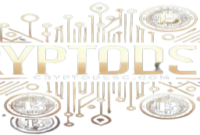The Revolutionary Power of 51%: Unlocking the Secrets of Proof of Work
Introduction
In this auspicious occasion, we are delighted to delve into the intriguing topic related to The Revolutionary Power of 51%: Unlocking the Secrets of Proof of Work. Let’s weave interesting information and offer fresh perspectives to the readers.
The Revolutionary Power of 51%: Unlocking the Secrets of Proof of Work

The world of cryptocurrency is rife with complex concepts and technical jargon. One such concept, often shrouded in mystery, is Proof of Work (PoW). This seemingly arcane mechanism is, in fact, the backbone of many prominent cryptocurrencies, including Bitcoin. Understanding PoW is crucial for anyone interested in the future of digital currencies and the decentralized technologies that power them.
The Essence of Proof of Work:
At its core, Proof of Work is a cryptographic puzzle designed to secure a blockchain network. It functions as a gatekeeper, ensuring that only authorized transactions are added to the blockchain’s immutable record. This security measure relies on the principle of computational effort: miners, specialized computers, compete to solve complex mathematical problems. The first miner to solve the puzzle receives a reward, usually in the form of newly minted cryptocurrency.
The 51% Attack: A Threat to PoW Networks
While PoW is generally considered a robust security mechanism, it’s not without its vulnerabilities. One of the most significant threats is the so-called "51% attack." In this scenario, a malicious actor or group gains control of over 50% of the network’s computing power. This gives them the ability to manipulate the blockchain, potentially double-spending coins, censoring transactions, or even altering the blockchain’s history.
Why is 51% the Magic Number?
The 51% threshold is crucial because it represents the tipping point where a single entity can effectively control the network. With more than half the computing power, a malicious actor can outpace the rest of the network in solving puzzles and validating transactions. This allows them to effectively hijack the blockchain, rendering it vulnerable to manipulation.
The Defense Against the 51% Attack:
Fortunately, PoW networks have several built-in defenses against 51% attacks. These include:
- Decentralization: The distributed nature of PoW networks makes it incredibly difficult for a single entity to amass a majority of the computing power.
- Hash Rate: The overall computational power of the network, known as the hash rate, acts as a deterrent. A high hash rate makes it exponentially more expensive and challenging to acquire the necessary resources for a 51% attack.
- Economic Incentives: The reward system in PoW networks incentivizes miners to act honestly. Attacking the network would ultimately harm their own financial interests.

Beyond the 51% Threat: The Advantages of Proof of Work

Despite the potential for 51% attacks, Proof of Work offers several advantages that make it a valuable security mechanism for blockchain networks:
- Security: PoW is inherently resistant to tampering and fraud. The computational effort required to manipulate the blockchain makes it incredibly difficult for attackers to succeed.
- Immutability: Once a transaction is added to the blockchain, it is virtually impossible to reverse or alter. This ensures the integrity and reliability of the network.
- Transparency: All transactions on a PoW blockchain are publicly visible and verifiable, fostering trust and accountability within the network.
- Community Engagement: PoW networks encourage active participation from users and miners, contributing to a vibrant and resilient ecosystem.

The Future of Proof of Work:
Proof of Work is a cornerstone of blockchain technology, offering robust security and immutability. However, it also faces challenges, particularly in terms of energy consumption. While advancements in hardware and mining techniques are reducing the environmental impact of PoW, alternative consensus mechanisms like Proof of Stake are gaining traction.
The Future of Blockchain Security:
The evolution of blockchain technology will likely see a convergence of different consensus mechanisms. Proof of Work, while facing challenges, remains a valuable tool for securing decentralized networks. Understanding the intricacies of PoW, including its vulnerabilities and advantages, is essential for navigating the ever-evolving landscape of blockchain and cryptocurrency.
Understanding the Power of 51%:
The 51% attack serves as a reminder of the importance of decentralization and the need for continuous vigilance in safeguarding blockchain networks. By understanding the underlying principles of Proof of Work and the threats it faces, we can better appreciate its significance in the future of digital currencies and decentralized technologies.
Conclusion:
Proof of Work is a powerful mechanism for securing blockchain networks, offering a balance of security, immutability, and transparency. While the threat of a 51% attack remains a concern, the decentralized nature of PoW networks, coupled with the economic incentives for honest participation, make it a formidable force in the fight against manipulation and fraud. As the blockchain ecosystem continues to evolve, understanding the nuances of Proof of Work will be crucial for navigating the future of decentralized technologies.

Closure
Thus, we hope this article has provided valuable insights into The Revolutionary Power of 51%: Unlocking the Secrets of Proof of Work. We hope you find this article informative and beneficial. See you in our next article!
google.com
















